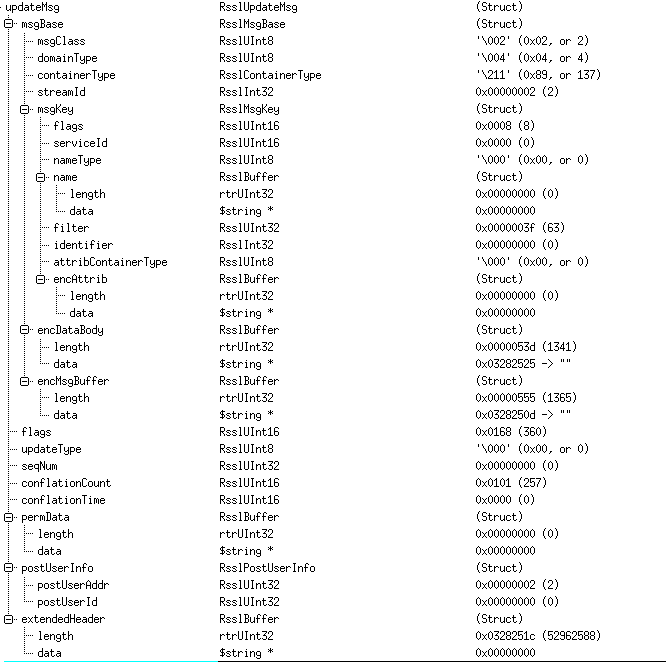I'm using ETA C API in Linux and have the following questions on handling these scenarios
1.What is the recommended action that client need to take if rsslRead() returns the following errors ? Currently, we disconnect and reconnect to recover connection.
RSSL_RET_CONGESTION_DETECTED
RSSL_RET_SLOW_READER
RSSL_RET_PACKET_GAP_DETECTED
Login Messages:
2.Under Login status: RSSL_MC_REFRESH and RSSL_MC_STATUS:
a.When does the client receive the errors: CLOSED, CLOSED_RECOVER for login request ? Currently, the application recovers connection.
b.When does the client receive error SUSPECT for login request ? Currently, the application closes source directory stream and doesn’t recover connection. Should it disconnect and reconnect to recover connection ?
3.For Login status RSSL_MC_UPDATE, application takes no action
4.For login status RSSL_MC_CLOSE, application recovers connection.
Source directory Messages
5.When does the client receive message from ADS with the states: RSSL_MC_UPDATE, RSSL_MC_CLOSE and RSSL_MC_STATUS ? Currently, the application takes no action.
6.How does the client application notified if a particular service is down or up ? What does the application need to do to recover ?
Dictionary Messages
7.How does the update to dictionaries sent to client ? This is not shown in examples ?
8.What does the message RSSL_MC_STATUS mean ?






